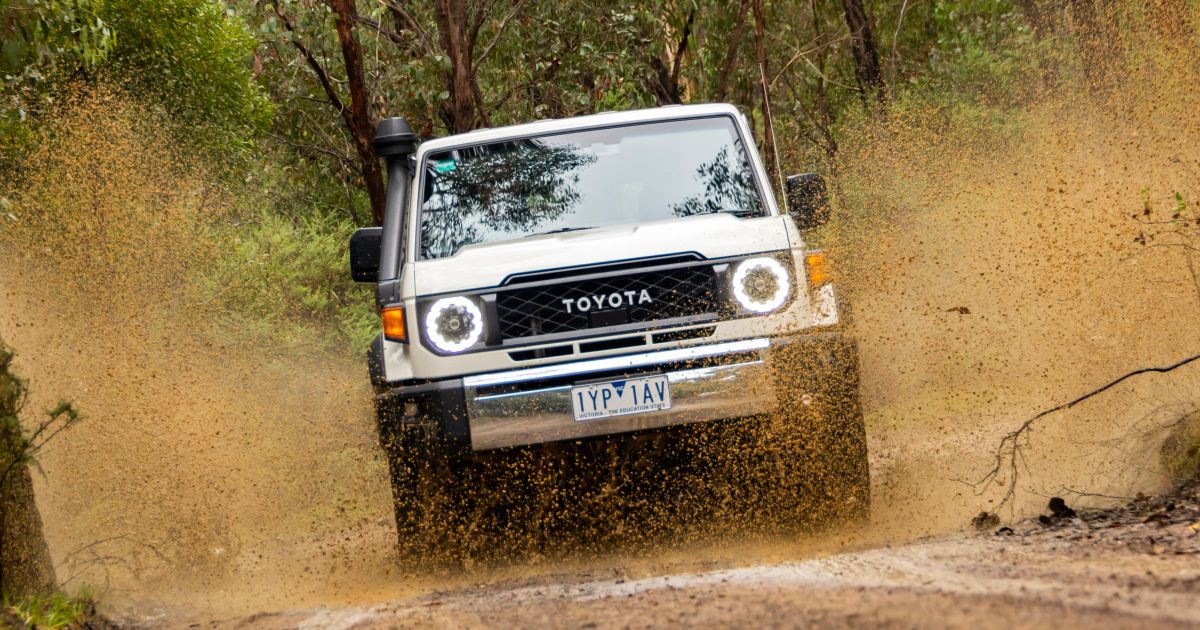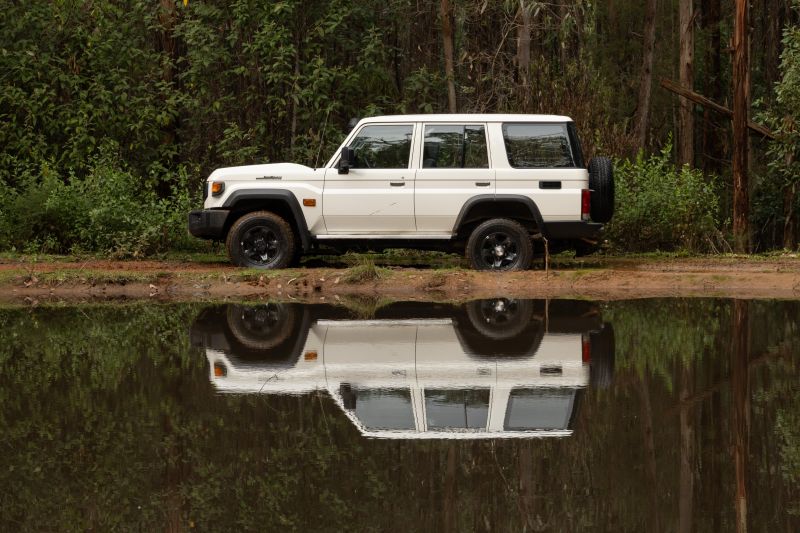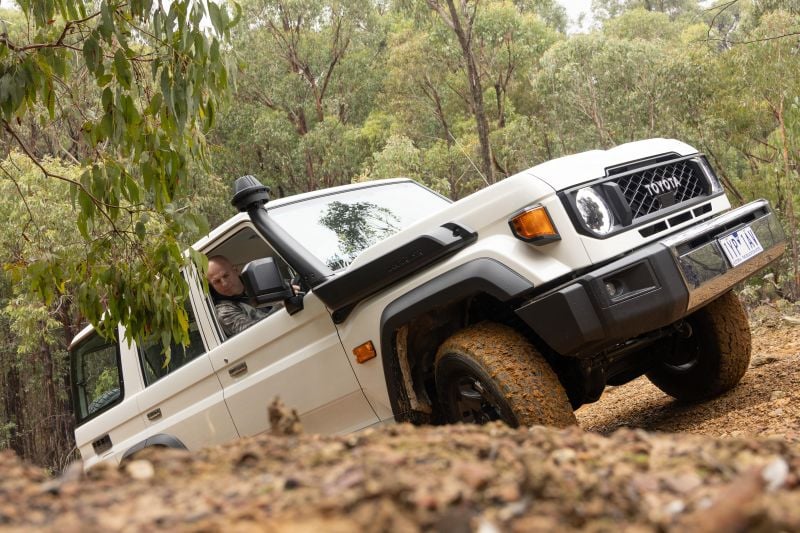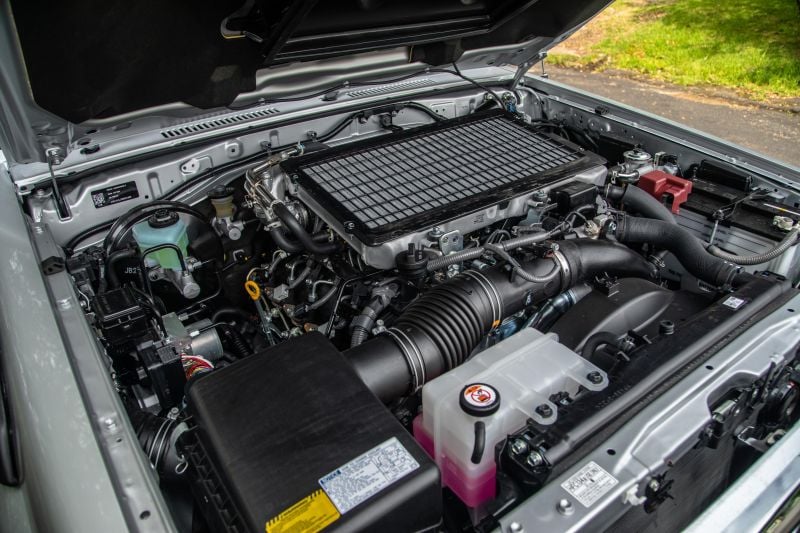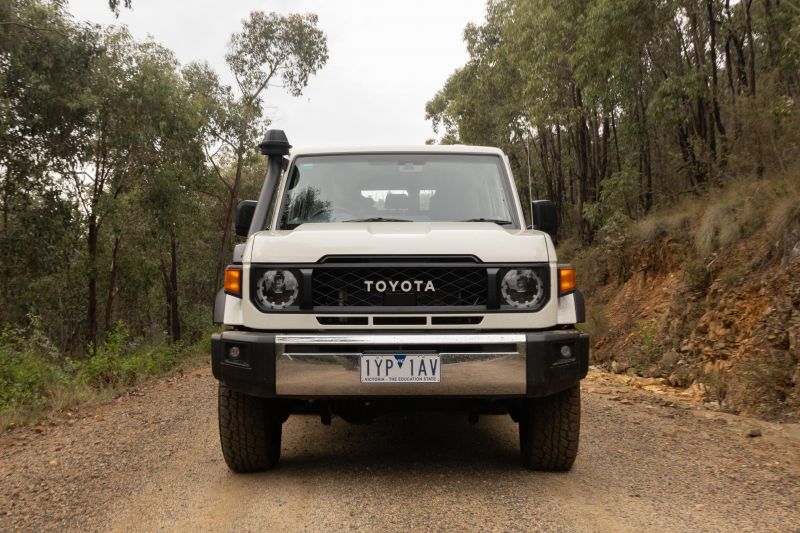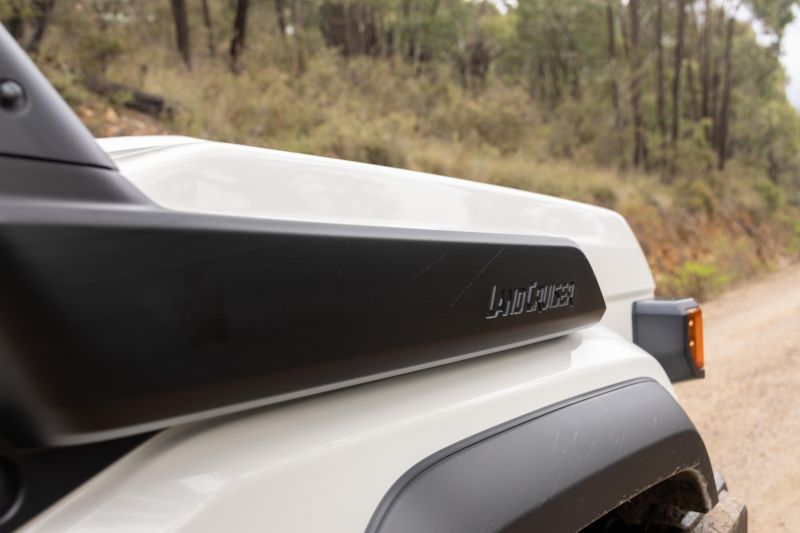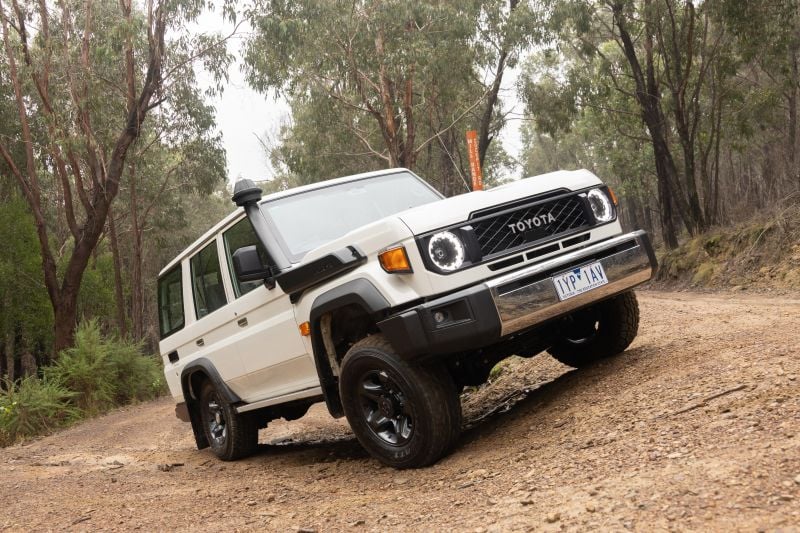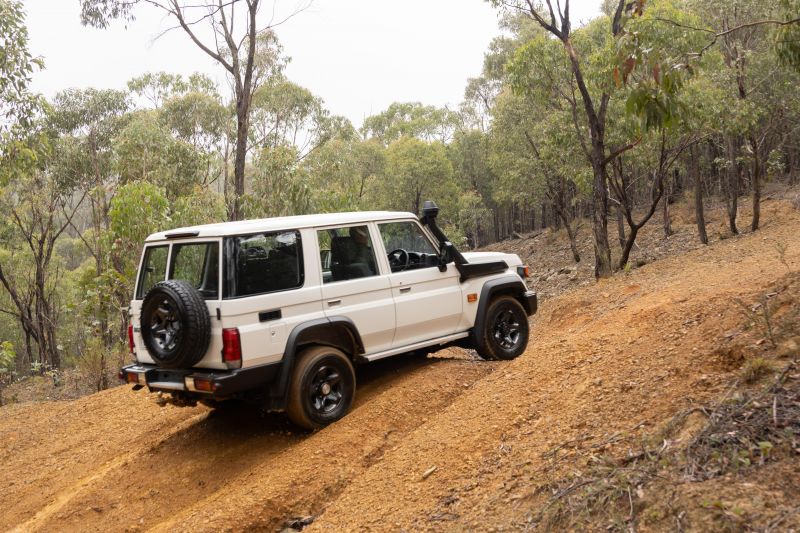2024 Toyota LandCruiser 70 Series V8 off-road review
Is this a facelifted 1990s Prado or does the 2024 Toyota LandCruiser 76 Wagon actually have something to offer?
Introduced in 2007, the 76 Series has proven to be a popular seller for Toyota despite its many drawbacks, including the spartan and utilitarian fit-out – you basically get very little for your money in terms of tech, comfort and modernisation, although I was surprised to see electric windows, a cup holder and a digital centre screen in the current model.
Add the fact the LandCruiser 76 sports a narrower rear wheel track, a design abomination left over from the first V8 model, when Toyota had to widen the front of the vehicle to accommodate the wider engine (1VD-FTV), yet didn’t bother to widen the rear.
It has created stability issues to the point where numerous aftermarket suppliers offer kits to rectify the problem. Yet, Toyota continues to ignore the issue along with requests from consumers and has done nothing about it for over 16 years – but the concerns regarding ‘nothing being done’ and this vehicle stem back way further!
Have you ever seen an original Prado? These vehicles, known across South East Asia as the LandCruiser II, are stalwarts of the off -road scene that are still prized possessions today, being quite popular in places like Malaysia where there’s a huge thirst for off-road jungle camping.
Launched back in 1990, the original Prado – a four-door version of the original two-door 70 Series, introduced in 1984 designed to take over from the formidable 40 Series – have virtually remained unchanged over 36 years and you would in no way be questioned for glancing at a 1990 LandCruiser II and thinking ‘there goes a 2024 76 Series!’
On road the Cruiser is comfortable enough to cruise along with ease. For some, it’s no big deal, but you need to remember the 76 Series V8 only comes in manual which rules out most millennial drivers! The interior is bland, outdated and offers nothing more than simplistic function over form. It’s not winning any design awards and it’s a ‘bare bones’ driving experience.
Electric windows are a big bonus, as are a couple of cup holders and a relatively tiny digital screen in the centre of the dash that again, simply does the bare minimum. Apart from that, there is nothing really to talk about above and beyond what you might expect from a vehicle built in the 1980s.
With that all said, the 76 is realistically a refined version with, for the most part, an upgraded braking system, a coil front end, and of course the legendary 4.5-litre V8 turbo-diesel (although even that is under threat these days). Apart from that though, what are you really getting for your money and how much better does it actually perform?
Off-road
The LandCruiser 76 Series (also known as the LC76 or 76 Cruiser) is a part-time 4WD.
Behind the five-speed transmission sits the HF1A standard transfer case that, apart from coming with a more modern electrical motor for shifting, doesn’t really do anything more than the comparable transfer case from any LandCruiser born in the 1970s or 1980s.
Being part-time 4WD, it is primarily a 2WD until you select 4H which keeps the same drive ratio but engages the front hubs and redirects 50 per cent of power and torque to the front axle.
Shifting to 4L changes the ratio of the transfer case for a true low-range experience. The system is basic and again, whilst very well-designed and built for reliability, does nothing more than what any old LandCruiser could.
The front coils are a nice touch, providing a softer ride up front, but they don’t seem to provide any real improvement in suspension articulation. The 70 Series are renowned for being stiff and the lack of flex can really only be compensated by the activation of both front and rear diff locks.
Without those though, the 76 is arguably more comfortable, yet no more capable than a 60-, 55- or even a 40 Series LandCruiser.
On the dirt it trundles along reliably but offers nothing to impress beyond the torque of the diesel V8. In low range it crawls with confidence and control, but there’s nothing outstanding, groundbreaking or noteworthy. It simply gets the job done with no frills (or thrills).
What more can we say, whilst the LandCruiser 70 Series driveline remains fairly similar to that of the original 40 Series from the late ’70s and early ’80s, and the front coils do offer some concessions and benefits, you are basically still driving what is affectionately referred to as a ‘brick on wheels’.
It’s basic, purely functional, nothing fancy. Sure it’s robust, tough and reliable, but you are going to need to spend money on it to get any improvements in off-road performance from what you could get from a 1977 FJ45 LandCruiser kitted out with a set of ARB front and rear diff locks, and not much else…
What’s under the bonnet?
The LandCruiser wagon we are driving today is fortunately powered by the proven and robust 1VD-FTV 4.5-litre V8 turbo-diesel.
It comfortably produces 151kW of power and 430Nm of torque, and is backed by a five-speed manual transmission – yes, you’re getting the picture, Toyota don’t even offer an automatic transmission version of the V8.
Combine all of this with a ‘near to unchanged’ transfer case and third members, and there are not a lot of performance improvements to the gearing and differential end of the vehicle’s driveline.
Unfortunately, the legendary diesel V8 has virtually been decommissioned, and whilst this V8 powerplant has been a defining feature of the LandCruiser’s robust performance and off-road prowess for many years, a new era has dawned.
Last year Toyota released an updated version of the LandCruiser 70 Series with a version of the 2.8-litre four-cylinder out of the HiLux and Prado with a six-speed automatic option.
Mod-ability
This is one area where the LandCruiser certainly is king. As one of the top selling 4WDs in the world, there is no end to the number of accessories, modifications and upgrades that can be done to a LandCruiser.
A visit to ARB could easily part you with $30,000, leaving you with a solid recipe for a tough, hard working and well equipped farm truck – but it doesn’t stop there!
A number of companies offer extensive GVM upgrade solutions that can even incorporate 6WD conversions, turning your humble LandCruiser into an all-terrain super touring animal (with the appropriately widened rear end).
Power upgrades are also abound, with numerous offerings at the extreme end of full ECU remaps that take full advantage of that bulletproof 4.5-litre V8 with big increases in both power and torque.
Combined with a turbo, intake and exhaust upgrade, it’s not unreasonable to achieve gains of up to 94kW and 320Nm, turning your V8 LandCruiser into an axle-snapping tourer or a towing beast!
What you do and how you do it is unlimited. The overall message is that you can customise and improve on this very basic offering from Toyota to make the LC76 a far more capable, comfortable and appealing in almost every aspect.
For many, the appeal of the very spartan LandCruiser is that along with it’s ultimate reliability, it’s a blank canvas for you to create your ideal workhorse, weekend warrior or tough tourer!
It’s also worth mentioning that the LC76’s GVM was recently upgraded from 3060kg to 3510kg. What that has done is both confronting and a grand improvement.
At the previous GVM of 3060kg, if you added a few accessories, whacked a fridge in the back and you headed off with three mates for the weekend, you would likely be close to or at your GVM limit and legally unable to pack any food, let alone a few beers.
So, while the upgrade to the GVM is welcomed, it’s important to know the only reason it was done was to move the LC76 into the Light Truck category that didn’t need to pass the same stringent safety standards as other light passenger vehicles.
CarExpert’s Take on the Toyota LandCruiser 70
I am left with mixed emotions and a split decision on the worth and value of the LandCruiser 76 Series.
There’s no doubt Toyota is the king of off-roaders, and its vehicles’ performance and reliability is undeniably amongst the best in the world in terms of availability of vehicles, parts and accessories, durability and endurance.
What really gets me though is the lack of innovation, any creature comforts or advanced tech, and the rising price tag. While that’s a hard pill to swallow, the Toyota LandCruiser 70 Series overall will continue to retain its iconic status at the top of the 4WD scene.
The 76, just like the 79, may lack personality but it certainly has its place. But, the reality is the LandCruiser 70 Series is the staple farm truck Australia-wide and an iconic symbol of the outback.
Has its overall performance improved at all across the past 36 years? If the V8 diesel is taken out of the equation (which it sadly now is) and we overlook the marginal improvement in the brakes (plus electric windows and a cup holder or two), there’s not really much in it – it’s basically the same truck, just newer.
Spartan it may be, it’s popular and continues to perform moderately well off-road and off the salesroom floor.
What things should Toyota add, in terms of tech and interior comforts, to bring the 70 Series into the 21st century? Let us know in the comments below.
Click the images for the full gallery
MORE: Buy a Toyota LandCruiser 70 Series
MORE: Everything Toyota LandCruiser 70 Series

